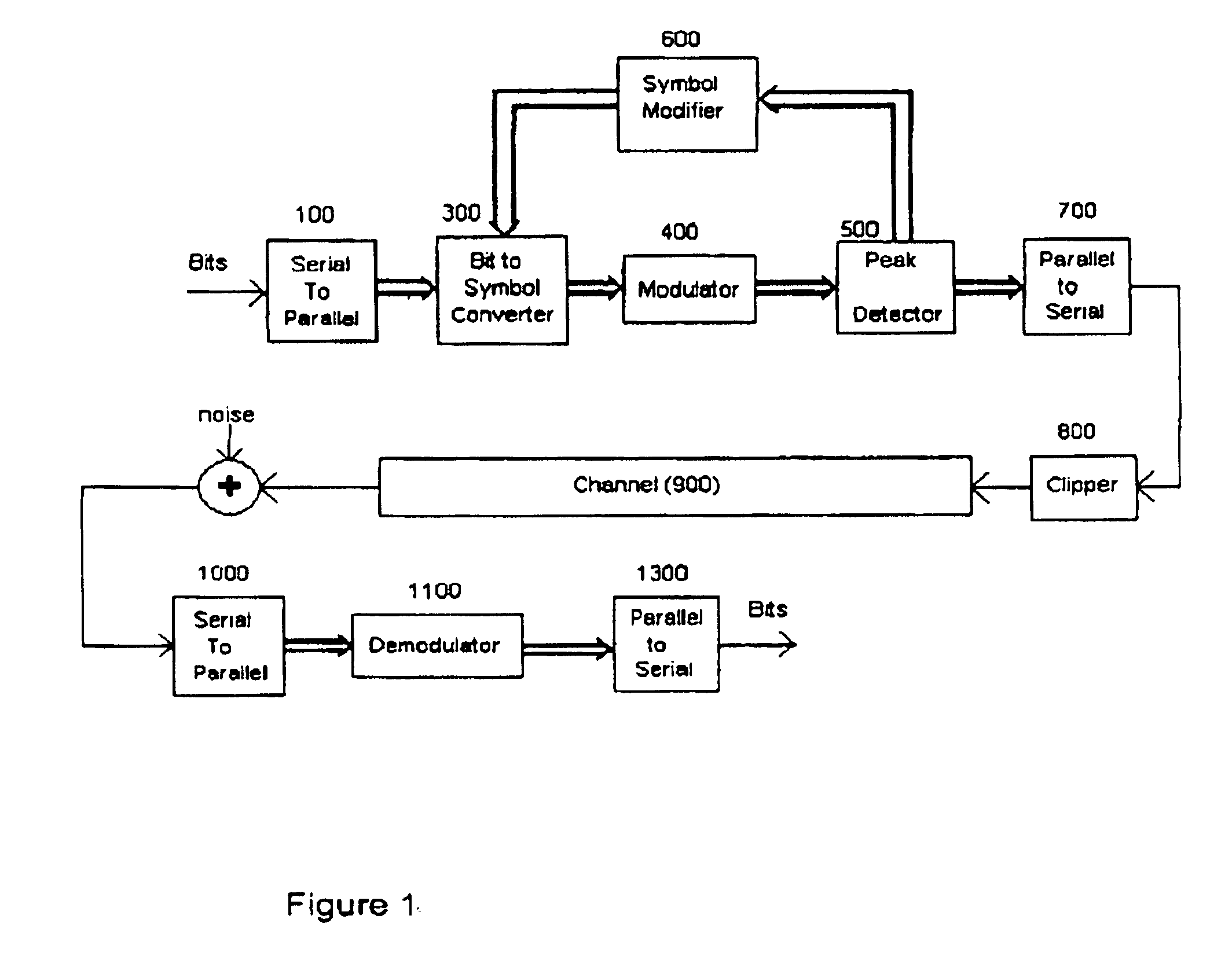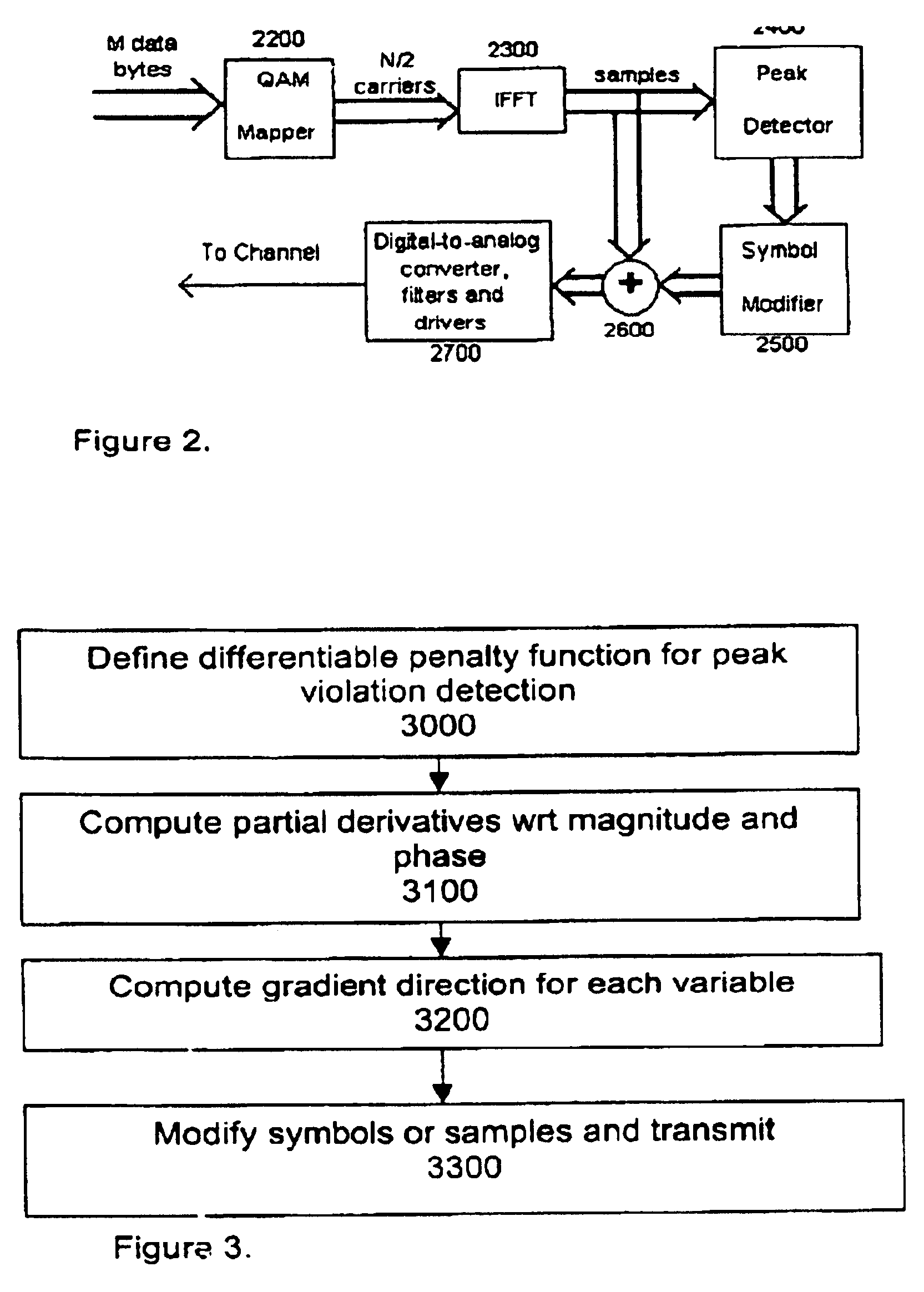Technique for peak power to average power ratio reduction in multicarrier communication systems
a communication system and multi-carrier technology, applied in the field of communication systems, can solve the problems of inability to meet all, intermodulation distortion, saturation in the subsequent amplification stages, etc., and achieve the effect of reducing the par, reducing the amount of correction provided by the method, and reducing computation overhead
- Summary
- Abstract
- Description
- Claims
- Application Information
AI Technical Summary
Benefits of technology
Problems solved by technology
Method used
Image
Examples
Embodiment Construction
The proposed scheme is applicable to multicarrier communication systems where the input data bits are converted to a symbol modulated by each subcarrier, modulated and transmitted on the channel. More generally, it is applicable to any system where the modulation and demodulation are performed at the frame (symbol) level. However, the ensuing description considers a multicarrier system employing IFFT and FFT for modulation and demodulation, respectively.
A block schematic of the proposed method is shown in FIG. 2. The data frame of M bytes is mapped to symbols in block 2200 and modulated using the IFFT block 2300. It is assumed that the multicarrier system has N / 2 channels. The output rate is assumed to be N samples per frame (i.e., the number of IFFT samples per frame is N).
The IFFT samples are passed through a peak detector 2400. The peak detection is carried out on the modulated samples using a predetermined threshold (or set of thresholds). The output of the peak detector activat...
PUM
 Login to View More
Login to View More Abstract
Description
Claims
Application Information
 Login to View More
Login to View More - R&D
- Intellectual Property
- Life Sciences
- Materials
- Tech Scout
- Unparalleled Data Quality
- Higher Quality Content
- 60% Fewer Hallucinations
Browse by: Latest US Patents, China's latest patents, Technical Efficacy Thesaurus, Application Domain, Technology Topic, Popular Technical Reports.
© 2025 PatSnap. All rights reserved.Legal|Privacy policy|Modern Slavery Act Transparency Statement|Sitemap|About US| Contact US: help@patsnap.com



